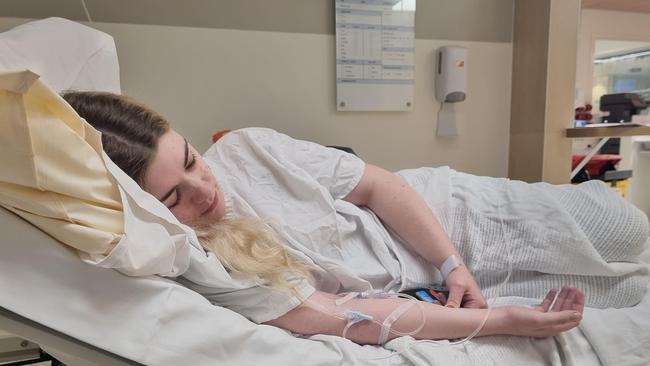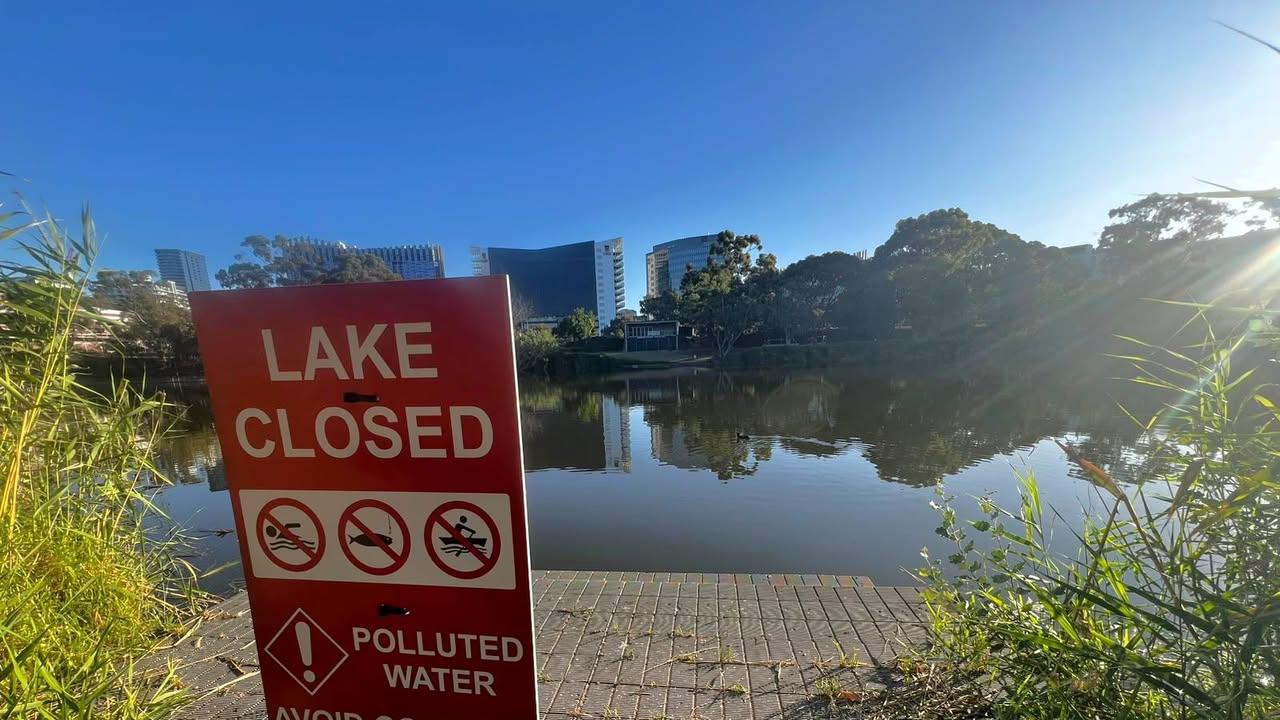‘Living hell’: Aussie’s battle with ‘suicide disease’
A woman has opened up about what it is like living with an extremely rare condition known as “suicide disease”.

Health
Don't miss out on the headlines from Health. Followed categories will be added to My News.
Every day for almost three years, Emily Morton has felt nothing but pain.
Back in early 2022, the Adelaide woman had the entire world at her feet.
The 28-year-old had just tied the knot with the love of her life, Andy, with the loved-up pair getting ready to start their own family.
But then Emily noticed a strange nagging pain starting to emerge in her teeth.
She visited a dentist, who could not see anything awry. Within days, the pain became excruciating, spreading to her entire mouth and both sides of her face.
“Imagine having a dentist drill into every single one of your teeth 24/7 and there is nothing you can do to stop the pain,” Emily told news.com.au.

“I began experiencing electric shocks going through both sides of my face, triggered by anything that touched my face.
“It would hurt when I smiled, talked and ate. All normal things. There are no words to describe this degree of pain.
“It is like being struck by lightning, it makes you want to fall to the ground and scream.”
After dentists and doctors were unable to diagnose her bizarre condition, Emily went through a series of brain scans and blood tests to try and get to the bottom of what she was experiencing.
She was eventually diagnosed with atypical trigeminal neuralgia, a variant of classic trigeminal neuralgia.
The condition affects the trigeminal nerve which carries signals from the face to the brain and can cause jolts of pain after even only light touching of an area of the face.

While it usually only involves one side of the face, Emily was experiencing pain all over.
Doctors told her that it is the “most painful condition known to medicine” – and there is basically nothing they can do to help.
The disorder earned the nickname of being the “suicide disease” as those who suffer it are in so much pain they often “wish they were dead”.
Emily said there are still no real answers as to how or why she contracted it.

“We have spent thousands of dollars trying to find a cause and an effective treatment for the pain,” she revealed.
“We’ve travelled interstate and even overseas in an effort to get me some kind of quality of life.
“It feels like a race against time to find out why.
“The condition has taken everything from me. It takes over my entire existence.
“My entire life is on hold while I search for something to give me relief. I just take it day by day and hold on to hope.”

Emily’s life has turned upside down since her diagnosis, with her and her husband having to move back in with her mum as she is no longer able to work.
She has already sought treatments in Sydney and Melbourne, with some costing her over $15,000 each.
Emily even went as far as heading to Europe for alternative treatments, but to no avail.
However, there is hope. A new type of neurosurgery is being offered in Australia called an MRI Guided Focused Ultrasound.
She would be placed into an MRI machine where a groundbreaking technique delivers precisely focused ultrasound waves to a specific brain region called the Thalamus to interrupt pain signals.
This has given her a 50/50 chance of finding some relief.
Unfortunately it is so new that it is not covered by Medicare and would cost over $40,000 plus travel, and rehabilitation costs.

Her sister Rachel has since set up a GoFundMe for Emily in the hopes of raising enough funds to undergo treatment.
So far, they have raised a whopping $20,000.
“I was blown away and so thankful to everyone who has donated, we are halfway to our goal,” she said.
“I absolutely hope we can find a cure. In 2024, I believe there must be technology out there, somewhere, that can at least help.
“My plan is then to dedicate my life to becoming a fierce advocate for people with invisible ‘mystery’ illnesses.


“I want them to know that they are not alone, I want them to hope and trust in the science that is emerging, and I want us to come together and fight for better healthcare.”
Emily hopes to find a cure in the future, but for now is just trying to appreciate the little things and taking life day by day.
“People who have this condition are honestly some of the bravest people to walk this earth,” she said.
“Usually it is diagnosed after the age of 50. For those that are young, it is utterly devastating.
“While it is not a terminal illness, it does take away your life.”
jasmine.kazlauskas@news.com.au
Originally published as ‘Living hell’: Aussie’s battle with ‘suicide disease’





